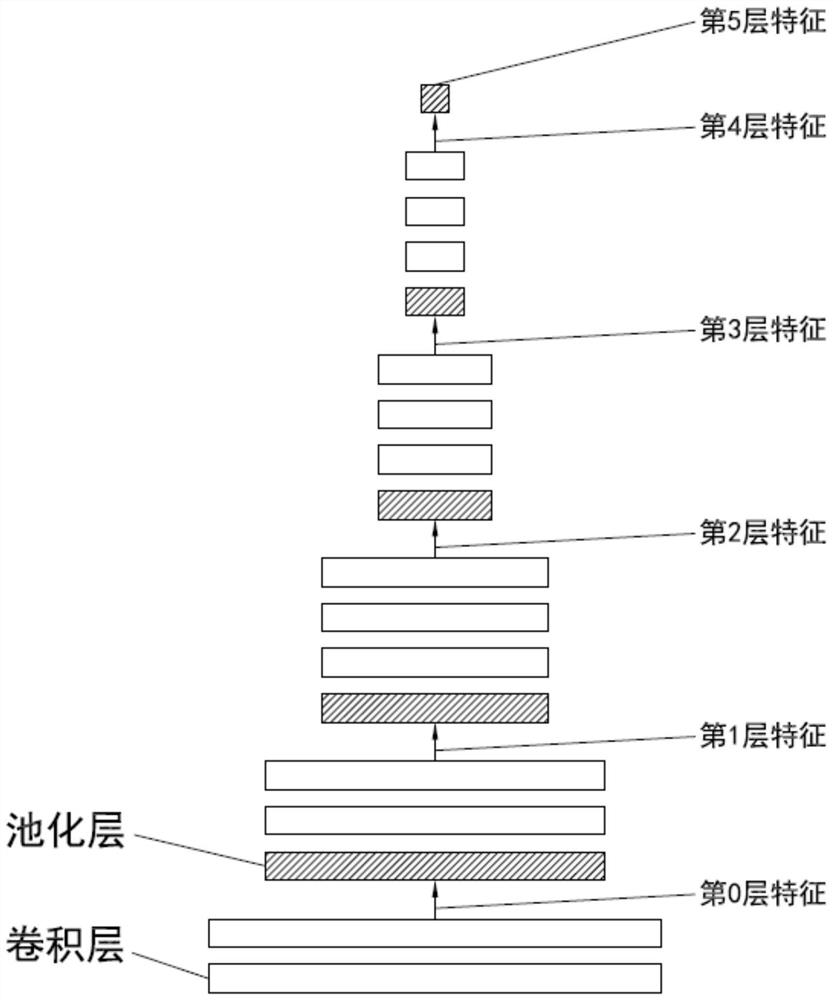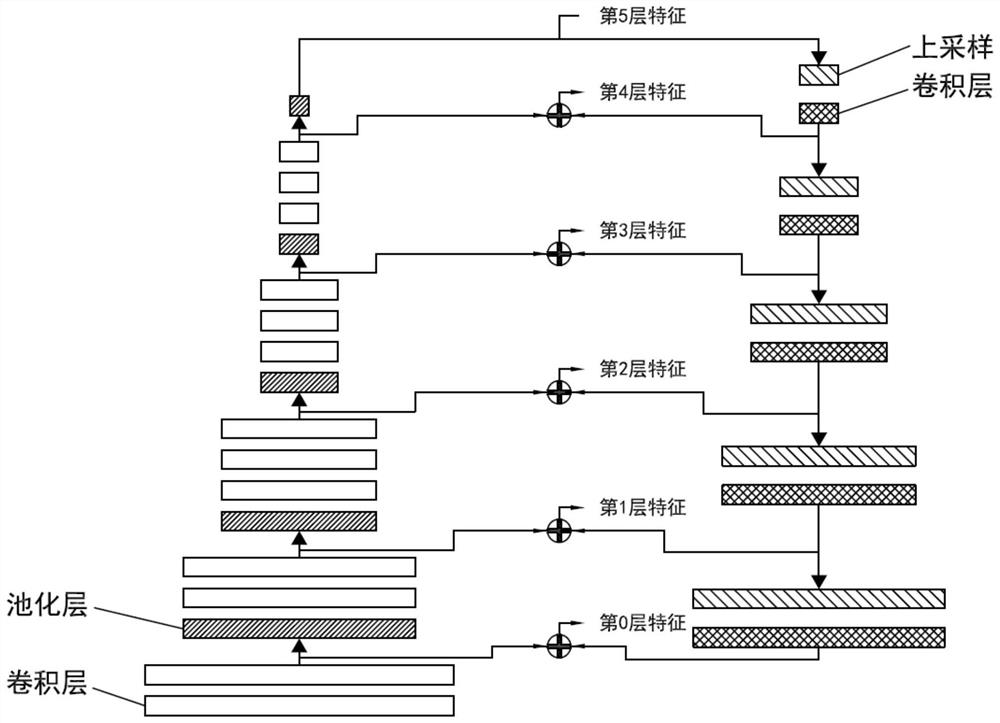A method of tea cicada recognition and counting based on convolutional neural networks
A technology of convolutional neural network and green leafhopper, which is applied in the field of image processing, can solve the problems of low accuracy, long labor time, and high degree of visual acuity for judging experience, so as to achieve accurate recognition and calculation, enrich semantic information, and avoid image information. lost effect
- Summary
- Abstract
- Description
- Claims
- Application Information
AI Technical Summary
Problems solved by technology
Method used
Image
Examples
Embodiment
[0036] like Figure 1 ~ 2 It is shown, a method of tea cicada recognition and counting based on convolutional neural networks, which is characterized by:
[0037] Including the following steps:
[0038] A. First of all, the standard VGG16 network structure is used as the main network of the main network, and the image samples containing all outlines with yellow boards are featured. At the same time, the shallow features of image samples are selected for regression operations;
[0039] Specifically: The image sample containing all outlines contained in the yellow board is an image frame obtained by using a high -definition camera shooting or any way to shoot in a mobile phone. extract;
[0040] In order to weaken the pixels of camera imaging pixels and the distance of the shooting distance, it is used to estimate the size of the size, so as to select the best feature layer in the backbone network as the input layer of the shallow network. The specific steps are:
[0041] First of al...
PUM
 Login to View More
Login to View More Abstract
Description
Claims
Application Information
 Login to View More
Login to View More - R&D
- Intellectual Property
- Life Sciences
- Materials
- Tech Scout
- Unparalleled Data Quality
- Higher Quality Content
- 60% Fewer Hallucinations
Browse by: Latest US Patents, China's latest patents, Technical Efficacy Thesaurus, Application Domain, Technology Topic, Popular Technical Reports.
© 2025 PatSnap. All rights reserved.Legal|Privacy policy|Modern Slavery Act Transparency Statement|Sitemap|About US| Contact US: help@patsnap.com



